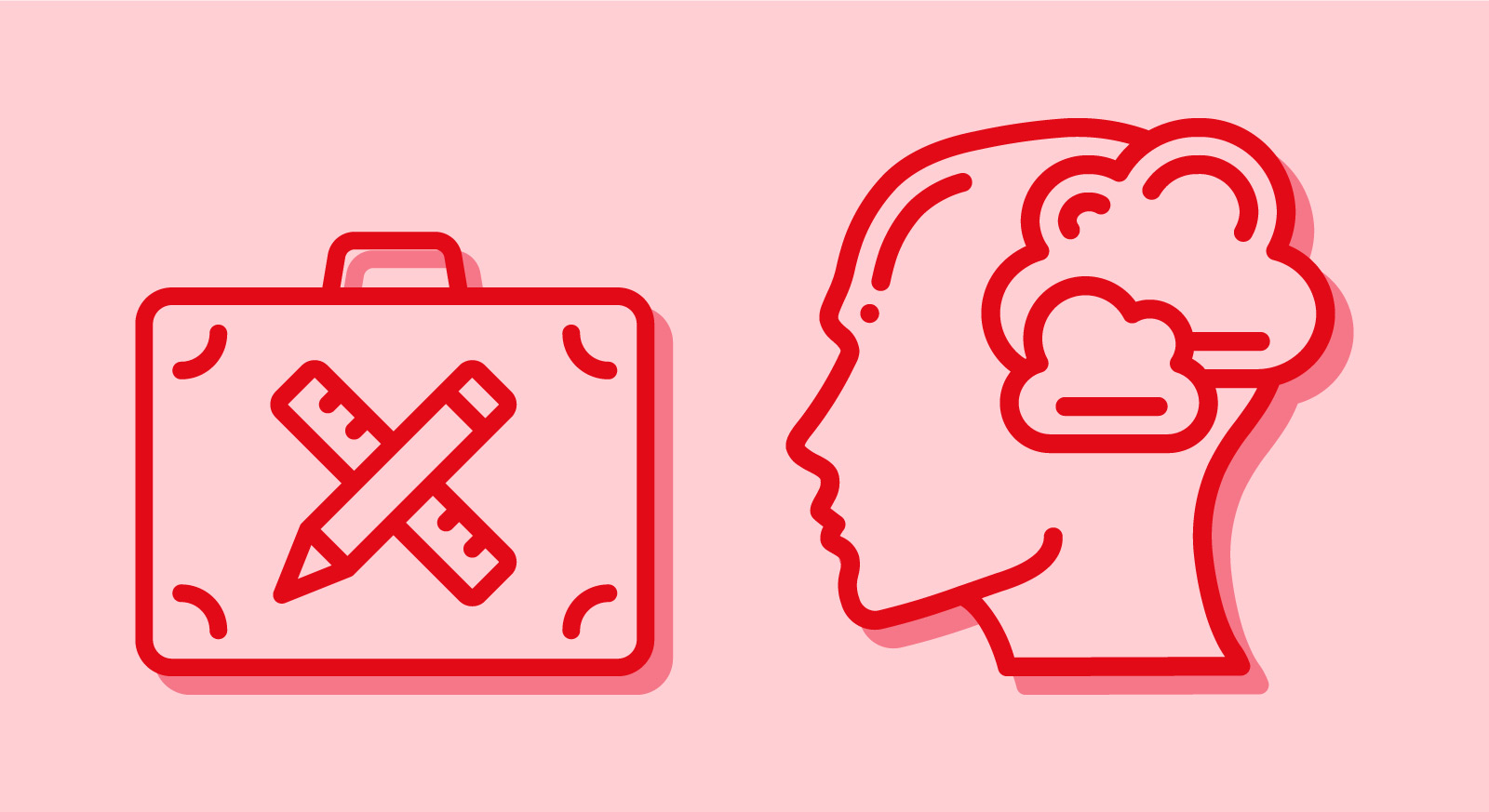Love it or hate it, your portfolio is an effective tool for taking control of your story, purposefully designing how you want potential employers to perceive you, and building connections with the right people.
Some of you might be thinking, do I even need a portfolio? The answer depends on your individual situation, on the role you’re applying for, and the organisation you’re applying to. For example, service design is less visual and may not require a portfolio. Quite a few SPARCK service designers applied without a portfolio and, instead, demonstrated their knowledge and skills through a case study exercise. Every design practice is different, and every organisation, so bear that in mind when reading the advice in this post.
A few weeks ago Radka Newton, a lecturer in design, asked me to help students reflect on putting a portfolio together as they transition from design students to designers in the real world. I thought the discussion would be of interest to other people applying for design jobs.
Many designers have an ambivalent view of portfolios. From the pride of seeing our accomplishments presented together, to imposter syndrome (are we and our achievement enough?), to the never-ending task of updating them.
At its best, though, a portfolio allows you to present yourself in the best light and to demonstrate your design and communication skills in a practical way. The process of putting one together also helps you reflect on where you are, where you want to go, and how you might get there.
We’re talking about a portfolio here because:
- that’s the language we usually use in the design profession, and;
- because visuals are such an important part of a designer’s work.
But much of the same approach applies to a CV for a content designer, user researcher or strategist.
As designers, we know that it’s always a mistake to jump straight to solutions. So, first, we need to do some discovery work and ask: who are you?
Use your portfolio to develop your personal brand
Your personality is who you are, in your core. And your reputation is how people talk about you based on your actions. Personal brand is something different.
It’s the image you craft for external audiences, such as professional peers and potential employers. It’s about the impression you want them to gain when they interact with you, hear you talk about your work, or look at your portfolio.
Crucially, though, it has to be authentic. Even if it’s only part of you, even if it’s only you on a good day, it has to chime with the real you.
Creating a personal brand is a mindful, intentional, purposeful process. Start by thinking about:
- What drives you – ambition, self-expression, your beliefs, or something else?
- Where you want to be – what’s the perfect job and/or ideal employer, the impact you want to have?
- Your values, and theirs – how do they align?
There’s little point pursuing a job at an agency which prides itself on, say, maverick creativity in advertising, if your passion is for delivering effective public services. And, vice versa.
Understanding yourself is easier said than done. Many of us are still working on it 20 or even 30 years into our careers in design. It will change over the course of years, as you discover new areas of interest.
For now, though, try thinking about what you most enjoyed on your course, or during any work experience you’ve already had. Which tasks did you dread, and which got you fired up?
You can research the values of potential employers by looking not only at their corporate presence, but also at what the people who work there say and do. Use your stakeholder mapping skills.
Observe them on social media, too. What do they talk about and share, and how do they talk about it?
When it comes to aligning your values ask yourself:
- Where there are strong alignment
- Where there are gaps or misalignments
- How material are those differences between their values and yours.
Your portfolio can emphasise the points of connection. Without stretching too far, you can emphasise the connections and the accomplishments that support your objectives and interests.
(Anyone worth working with will understand that the perfect candidate doesn’t exist, so don’t let gaps stop you from applying.)
Treat crafting your portfolio as a design challenge
Your portfolio does two jobs. First, it delivers content about you. Secondly, as a product in its own right, it demonstrates your skill as a designer and communicator.
Stand out in a crowd
People involved in recruitment often receive many more applications than they have jobs. Sifting through CVs and reviewing portfolios is an opportunity to reduce the number of candidates under consideration. Give them an excuse and your application can easily end up on the reject pile.
For a designer, that excuse might be as simple as spelling errors, misaligned text and graphics when you’ve boasted about your attention to detail. Or something that’s hard to navigate, with poor readability, when you’re claiming to be an expert in navigation and accessibility.
Present a compelling story, on the other hand, and you’ll go straight to the top of the pile. Even better, it might generate attention and get shared among networks of the kind of people who could help you with the next step in your career.
Think about people’s information needs
What do they need your portfolio to tell them, in what order of priority?
One useful idea is to think about three key things you want people to take away. For example, this designer...
- has a unique visual style
- is committed to social causes
- has their finger on the pulse when it comes to emerging software
- would add something really valuable to our company culture
- has already demonstrated an affinity with clients like ours.
You’ll also want to think about the format.
It’s easy to default to a website, but it doesn’t have to be. It could be hosted on an existing platform, such as Medium.
Or maybe it’s your social media feed, or on paper, or an exhibition, or a podcast, or... it doesn’t really matter, as long as it helps you stand out, tell your story, and connect with your audience.
Test and iterate
Get feedback
Share your portfolio with people you can trust to give an honest opinion. Peers, mentors, tutors, friends – as many people as possible.
Don’t just ask what they think, or whether they like it. Treat them as users, and this as user research, and ask questions like:
- What impression does this portfolio give?
- Is there anything you would have found useful that’s not here?
- What surprised you?
Don’t forget to ask for feedback from recruiters and employers, whether you got the job or not.
Research your blindspots
Here’s a tip: many portfolios fail to mention the environmental, operational and financial costs of design.
Courses don’t always teach this – although more often now than a few years ago – so people are often taken by surprise to be asked about it during career conversations.
If you can, make sure this important subject is at least touched upon in your portfolio. And find some time to research it and think about it.
A portfolio is your career companion
A portfolio is a constant work in progress. It’s never done.
It’s also not just for students transitioning into work but should be a life-long companion that supports you throughout your career, building meaningful connections that will help you grow.
Even if you can’t share details of work projects because of non-disclosure agreements, you can still explore how to carry the key messages that show your skills and approach.
As your portfolio goes into the wild and gets in front of connections, its strengths and weaknesses will become clear. This can help you work out what needs to be added, removed, or beefed up.
It can also highlight fundamental gaps in your experience and help you decide on which courses, self-study, or work experience to pursue.
Review your portfolio regularly and, ideally, tailor it for each opportunity that comes along. Make a portfolio review a regular quarterly or monthly task.
The longer you leave it between reviews, the more likely you’ll end up scrambling around the night before an application is due trying to fix it.
Can we speak to your class?
This post is based on a talk I gave to some students, prepped with my colleague Imogen Foulkes. If you’d like us to come and talk to your college or university, we’d be happy to do so.



